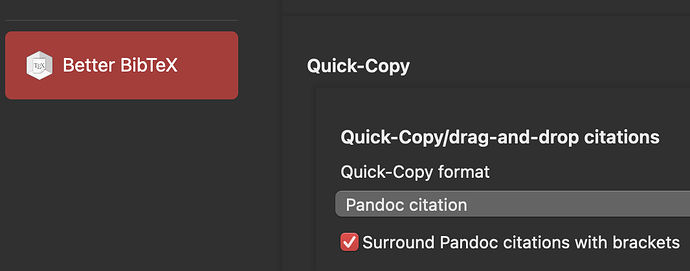There are many of us that use reference manager software with Scrivener, and no, it’s not rocket science. But there are a specific set of steps that need to be done in the right order. Here is what I would do, trying to simplify
- Don’t depend on only a LaTeX workflow: I’ve used LaTeX for years, have modified LaTeX for specific outputs. While it excels at detailed and complex layout tasks, it is difficult to tweak and hard to understand when it goes wrong. There is a ton of trial and error, and endless trips to Google for every detail. The LaTeX template in Scrivener is great, but it guides you to LaTeX-only with a PDF as the final product.
- Do use a compile path that uses Markdown as the output. Markdown is far more flexible, it can export to many more outputs so doesn’t lock you into one path. You can use LaTeX as an output, but are not locked into that path, and can compile the same project to LibreOffice/Word/EPUB etc.
- Scrivener supports two tools that work to convert markdown to several outputs: MMD and Pandoc. They both support LaTeX / ODT / HTML. BUT Pandoc supports many other outputs MMD doesn’t, and is much more flexible[1].
- Pandoc supports bibliographies directly from Scrivener. This is a massive plus. Pandoc has a citeproc engine that takes temporary citations and turns them into formatted bibliographies without any extra work.
As far as Scrivener goes, that means you can use a general non-fiction template. For writing, you set Better BibTeX to output Pandoc citations (see below). For compiling you use the MMD option, and if you want a final product without any more fussing, use post-processing in Scrivener to run Pandoc for you.
I can quickly craft a simple Scrivener template to do that later today if it would help. I have multiple academic Scrivener templates already crafted (search for scrivomatic / Quarto / Tufte Book / Typst), and you can see some of the outputs here all with citations and bibliographies direct from Scrivener: scrivomatic/sample-output at master · iandol/scrivomatic · GitHub
The second much less important point: while Zotero is free, it is harder to integrate with Scrivener and the workflow is a little bit more complex. You’ll find that most Scrivener users that depend on bibliographies that are active on the forum use Bookends, whose feature set and simplicity of use are offset by the fact that you have to purchase it.
I outline workflows for several different reference managers here:
As Bookends is macOS / iOS only, I have set up several students and collegues up with either JabRef or Zotero workflows and both are viable. To use Zotero+BBT with Scrivener+Pandoc:
This creates citations like [@Jones2022]. You can “optimise” the workflow by using a UI to select citations, the wiki outlines several options (the best ones use Alfred as a floating UI).
[1]: Pandoc is ~30MB download, MMD is ~1.5MB which is why Scrivener bundles MMD.
